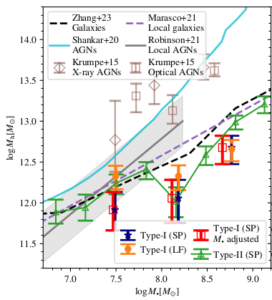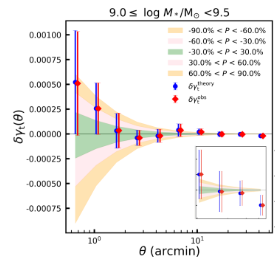The term gravitational lensing describes the phenomenon of light deflection by gravitational tidal fields. Massive objects (like galaxies and clusters of galaxies) bend the paths of photons as they propagate through the Universe. On extra-galactic scales, the filamentary structure of the cosmic web acts as a gravitational lens. A consequence is that the observed images of distant (i.e., high-redshift) galaxies are distorted with respect to their original shapes. Except in rare cases where the lensing is strong enough to produce elongated arcs and/or multiple images, such distortions are very slight and cannot be detected on individual galaxies. Only by averaging over a large number of galaxies can we detect a statistical signal -- this is the regime of weak lensing. Weak-lensing analyses play a key role in achieving the science goals of galaxy surveys like CFIS and Euclid.
| Mass Mapping | Non-Gaussian Structures | Cosmological Parameters |
| Galaxy-galaxy lensing |
A state-of-the-art weak-lensing pipeline depends crucially on accurate measurements of galaxy shapes. Our lab develops techniques to correct for instrumental effects like the point spread function (PSF) to produce high-quality weak-lensing galaxy catalogues.
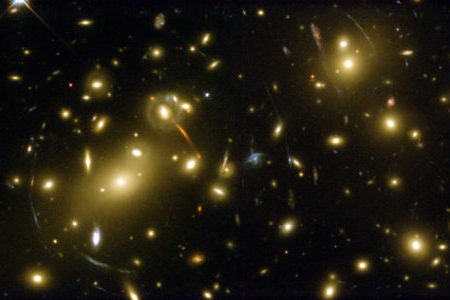
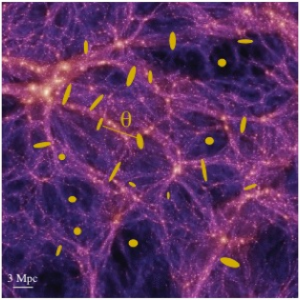
Mass mapping
Weak lensing allows us to map the structure of the Universe, both the dark matter that comprises most of the cosmic web as well as the luminous matter that traces it. Using catalogs of galaxy positions, redshifts, and their lensed shapes (ellipticities), we can generate maps of the mass distribution that caused the observed lensing. A significant challenge for mass mapping is the problem of missing data. Bright foreground stars, cosmic ray trails, CCD defects, and other spurious (i.e., non-cosmological) signals must be masked out, leaving gaps in the spatial data field. CosmoStat members have developed advanced statistical and image-processing techniques to cope with missing data and other important problems that arise in weak lensing analyses. In this spirit, our group has developed a robust methodology based on Bayesian statistics, analytic physical theory, and machine learning to address such inverse problems.
The statistics of mass maps provide a way to test alternatives to General Relativity (i.e. modified gravity theories) to better understand the nature of gravitation. In this vein, our group has worked on distinguishing standard and modified gravity cosmological models using higher-order statistics of mass maps as well as machine learning.
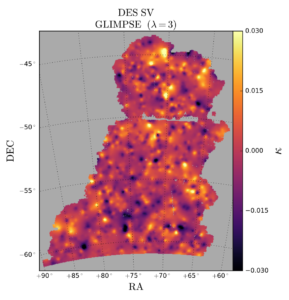
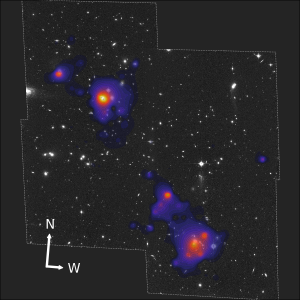
Glimpse
Glimpse is a mass-mapping technique developed in our lab that uses a sparsity-based regularisation scheme to recover high-resolution convergence maps. The method has been tested on realistic simulations of galaxy clusters, and has been applied to real data in both small- and large-field contexts. For example, Glimpse was used to reconstruct the mass distribution in the Abell 520 merging galaxy cluster system using Hubble Space Telescope observations. A mass map of the Dark Energy Survey (DES) Science Verification field has also been produced using Glimpse.
The Glimpse source code is freely and publicly available.
Non-Gaussian structures
On small scales, the structures of the cosmic web are non-Gaussian. This information is not captured by traditional second-order statistics such as the weak-lensing two-point correlation function or power spectrum. Peaks in weak-lensing maps, defined as local maxima of the lensing convergence, are tracers of over-dense regions and provide a means to extract higher-order, non-Gaussian information. Our group has devised a new model to predict weak-lensing peaks as a function of cosmological parameters. The code is called Camelus and has been studied in a number of publications (1, 2, 3, 4). More recently, our group has developed the "starlet ℓ1-norm", which is another summary statistic designed to capture non-Gaussian cosmological information from weak lensing maps. It is calculated by summing the absolute values of the coefficients obtained from the starlet (or wavelet) decomposition of these maps. It has been shown to outperform power spectrum, and peak- and void-count statistics combined. Our group is involved in developing a theoretical prediction for some of these higher-order statistics.
In Ayçoberry et al. (2023) we studied the impact of systematic errors on cosmological inference from weak-lensing peak counts. We quantified the effect of intrinsic galaxy alignments, baryonic feedback in groups and clusters, redshift errors, and, for the first time, local shear calibration.
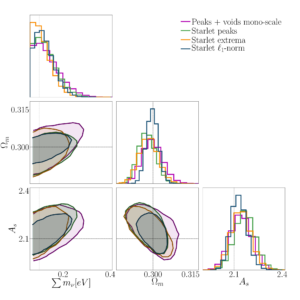
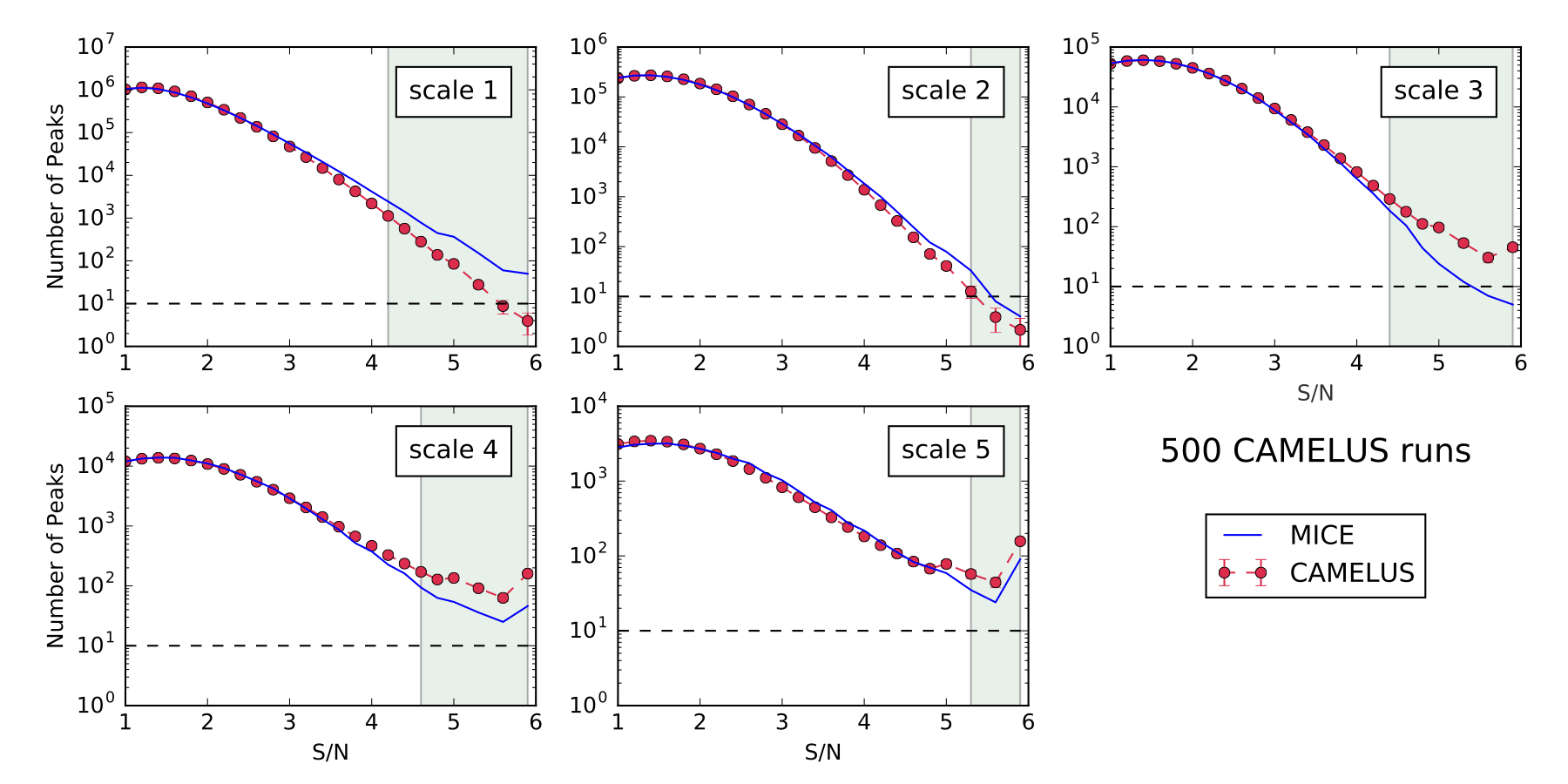
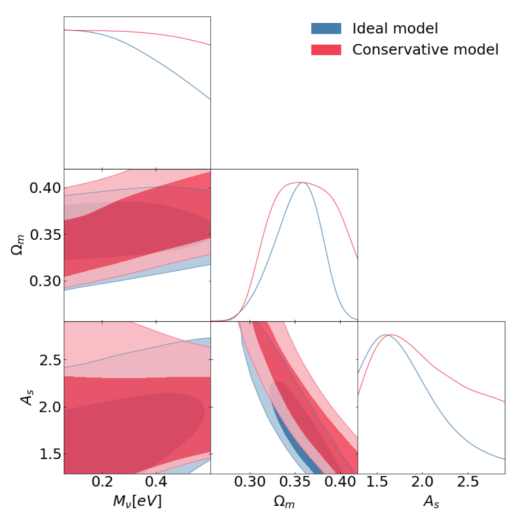
Cosmological Parameters
Weak lensing is a powerful tool to constrain the model of our universe, its expansion history, and the evolution of the cosmic web. Lensing allows us to measure model parameters such as the total matter density and the "clumpiness" of the cosmic web. This probe also is very promising to test theories beyond the standard model of cosmology, to measure properties of dark energy, and to constrain the laws of gravity on very large scales. CosmoStat scientists have contributed to the cosmological analysis of many large wide-field optical surveys, including CFHTLS, COSMOS, CFHTLenS, and DES. We are strongly involved in upcoming galaxy surveys such as CFIS and Euclid.
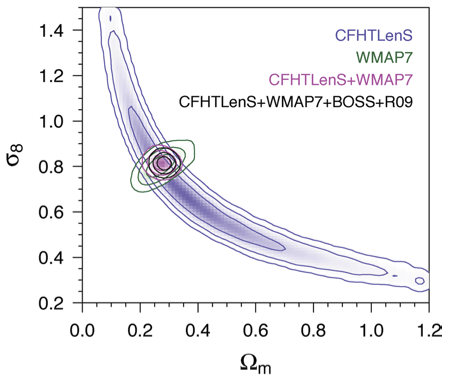
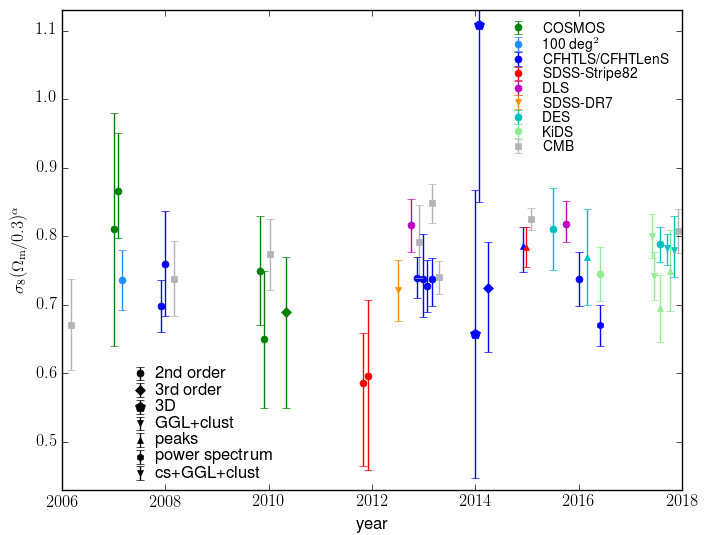
Galaxy-galaxy lensing
Galaxy-galaxy lensing denotes the statistical analysis of lensing distortions of background galaxies by the matter associated to foreground galaxies. Galaxy-galaxy lensing allows us to measure the mass of populations of galaxies, and to study the environment of galaxies of different type, color, luminosity, and redshift.
A recent CosmoStat-led publication used galaxy-galaxy lensing to constrain the relationship between the mass of supermassive black holes in the centers of galaxies and the dark-matter mass of their host halo. We use UNIONS weak-lensing galaxies for the background sample, and galaxies selected in SDSS as type-I and type-II AGNs as the foreground population.
In Zhang et al. (2024) we introduce a new diagnostics for galaxy-galaxy lensing (or, indeed, all cross-correlations between background weak-lensing shapes and foreground density tracers).
